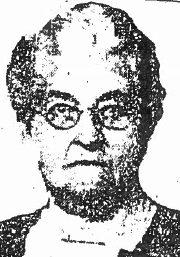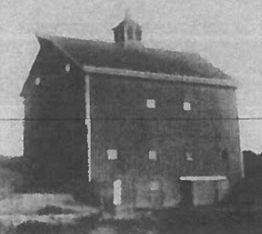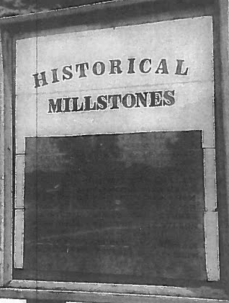Uncovering the History of the Mysterious Millstones at Illiniwek Forest Preserve
Two giant circular stones rest near the entrance of the Illiniwek Forest Preserve in Hampton. The stones are flattened and roughly five feet long in diameter and feature several grooves varying in size with no discernable pattern. They are worn down, cracked and scratched with grass and weeds struggling to break through.
No landmark or sign can be found near the unusual stones. Nothing that can answer how old they are, what they were used for or how they got there.
Photo: Two stones found on the southeast side of Illiniwek Forest Preserve
One man does have the answers. Joe Scherschel, longtime Hampton, Illinois resident, has a special connection to these mystery rocks.
Photo: Joe Scherschel
Joe’s great-great grandfather was Alfred Addison Adams, born Sept. 6, 1818. An intense man with a thick beard cascading to the middle of his chest, Alfred began operating the Adams’ Gristmill in 1842 in Rapid City, Ill. The gristmill contained millstones that used energy from the mighty Mississippi to put large pressure on grain to grind it into flour.
Millstones usually weighed more than a ton and consisted of a “runner stone“ that sat on top of the stationary “bedstone.“ The grain was put between these massive rocks. Pressure from river water would spin the runner stone, and the grain would be finely ground in the grooves of the two stones.
In fact, the two mysterious stones found at Illiniwek are the millstones used in the Adams’ Gristmill many years ago. Alfred Adams purchased the handcrafted stones from Italy in 1842 at the cost of $1,000 apiece. The equivalent cost today would be more than $55,000 for the pair.
Photo: Alfred A. Adams
When Alfred Adams died in 1882, he left the gristmill to his son Abraham Brickett Elliott Adams. He ran the mill with his wife, Sarah Adams, who also has close historical ties to the area. Native to Le Claire, IA, as an infant she shared a cradle with William Cody – known in history as the famous showman and bison hunter, Buffalo Bill.
Photo: Sarah Adams
In 1912, the gristmill along with the two millstones were transported down the Mississippi via barge to Hampton, Ill. The gristmill structure was then used as a barn on the Albert Oltman farm.
In 1944, the Oltman farm became property of the Rock Island County Forest Preserve District. The barn became one of the original maintenance buildings of Illiniwek Forest Preserve before it was destroyed in a fire started by local teenagers in the 1970’s.
Photo: Original Adams’ mill barn – Hampton, Ill.
The 175-year-old stones are the last remnants of the Adams’ Gristmill operation. Joe remembers a time when a sign stood between the two stones at Illiniwek showcasing their history. He hopes that someday a new sign will be erected in its place. Mike Petersen, Illiniwek Park superintendent, has the same wish.
Photo: Sign that once stood between the stones at Illiniwek
“The stones have a long history and have an amazing story behind them,“ said Petersen. “We’d like to tell that story for years to come.“
The Rock Island County Forest Preserve plans to move the stones that currently sit on the southeast side of the property to the northwest side near the campgrounds. A replacement sign which provides information on the history of the stones will be placed next to the stones in 2018.
Rock Island County Forest Preserve District, 19406 Loud Thunder Road, Illinois City, IL 61259 • (309) 795-1040
Contact Forest Preserve
© Copyright 2021 Rock Island County Forest Preserve











